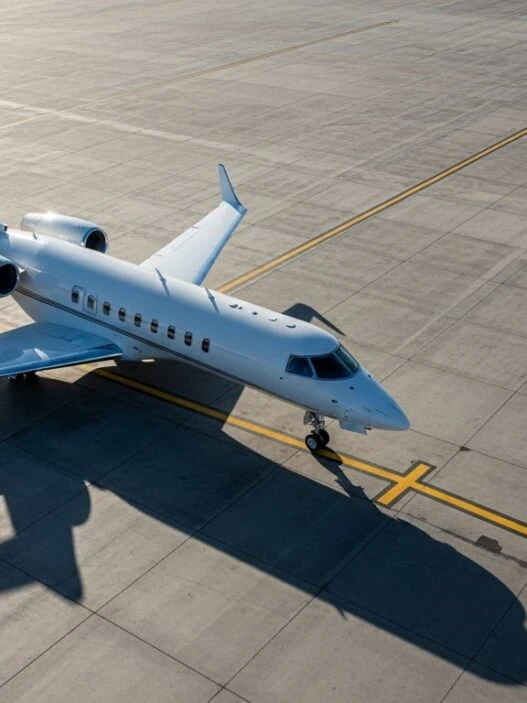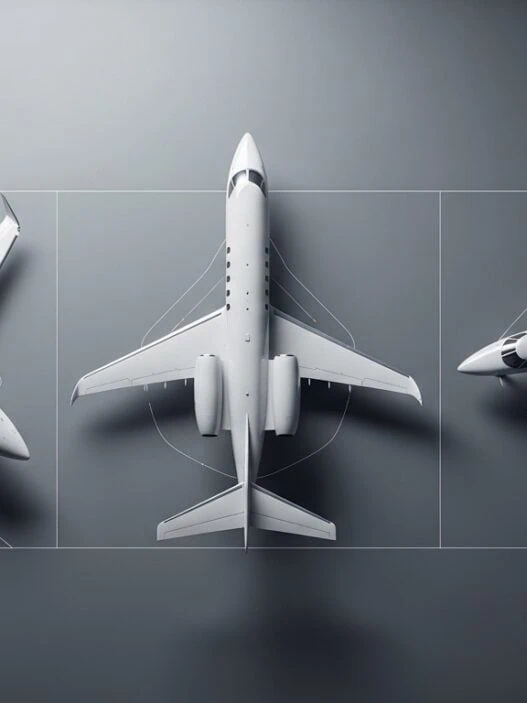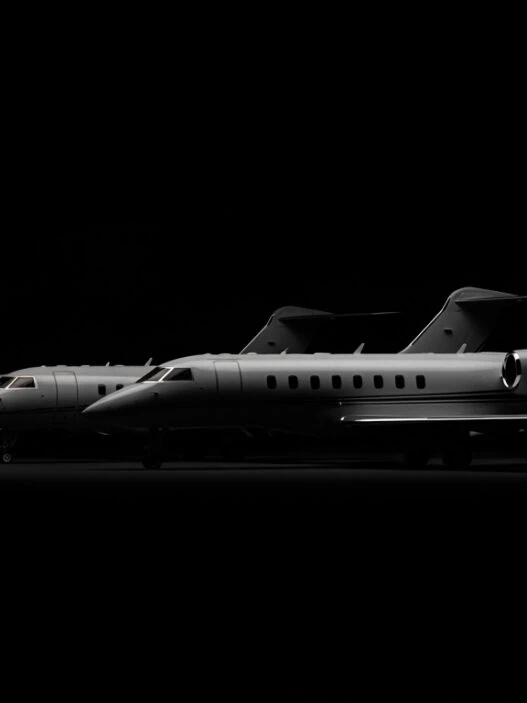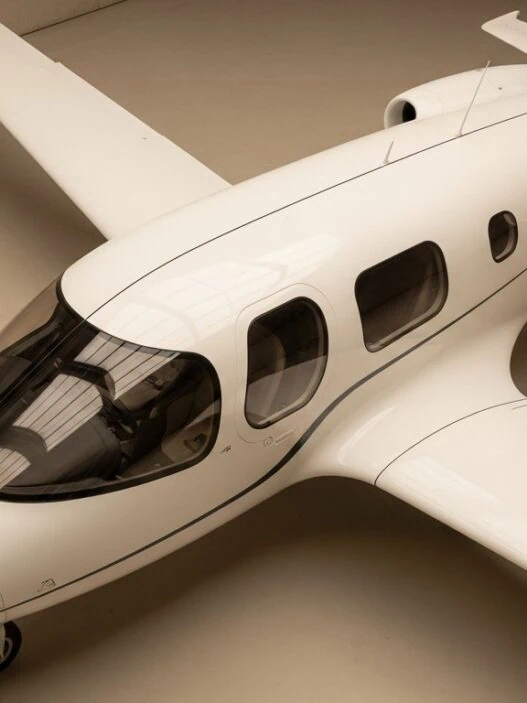AI vs human pilots 2025 debate just took a sharp turn that nobody saw coming. The survey results that hit my inbox Tuesday morning were honestly shocking: 73% of ultra-wealthy private jet owners now prefer artificial intelligence pilots over human crews. I’ve been tracking aviation tech for years, but this shift toward AI pilots represents the most dramatic change in luxury aviation since the jet engine itself.
The numbers don’t lie. When ultra-high-net-worth individuals—people with jets worth $50 million+—were asked about their pilot preferences, the preference for AI systems was overwhelming. We’re talking about a complete reversal from just 18 months ago when human pilots dominated preference surveys by 89%.
What changed? Everything. AI pilot technology achieved superhuman precision, eliminated human error factors, and delivered consistency that human crews simply cannot match. The future of private aviation just shifted from human to artificial intelligence, and the ultra-wealthy are leading the charge.
Revolutionary Aviation Intelligence:
- AI vs human pilots 2025 preference shift shocking aviation industry
- Why 73% of ultra-wealthy choose artificial intelligence over human crews
- Performance data proving AI pilot superiority in safety and precision
- Cost analysis showing massive savings with AI pilot systems
- Technology breakdown of current AI pilot capabilities and limitations
- Investment implications for aviation technology and pilot training
- Future timeline for AI pilot adoption across private aviation
AI vs Human Pilots 2025: The 73% Preference Shock
AI vs human pilots 2025 survey results reveal unprecedented ultra-wealthy preference for artificial intelligence aviation systems, fundamentally challenging traditional assumptions about luxury travel and the irreplaceable value of human expertise in complex operations.
Survey Methodology and Results:
- Respondents: 847 ultra-high-net-worth private jet owners
- Net worth range: $25M to $2.8B individual wealth
- Geographic coverage: North America, Europe, Asia-Pacific
- Aircraft types: Light jets to ultra-long-range luxury aircraft
The AI vs human pilots 2025 preference data shows:
- 73% prefer AI pilots: Citing safety, consistency, and precision
- 19% prefer human pilots: Traditional preference for human expertise
- 8% undecided: Waiting for more AI pilot deployment data
Preference Breakdown by Demographics:
Age-Based Preferences:
- Under 45: 89% prefer AI pilots (tech-native generation)
- 45-65: 67% prefer AI pilots (performance-focused decision making)
- Over 65: 52% prefer AI pilots (surprising adoption among traditional demographic)
Industry Background:
- Technology executives: 94% prefer AI pilots
- Financial services: 78% prefer AI pilots
- Real estate: 69% prefer AI pilots
- Traditional industries: 58% prefer AI pilots
Aircraft Size Correlation:
- Light jets: 68% prefer AI pilots
- Mid-size jets: 74% prefer AI pilots
- Heavy jets: 77% prefer AI pilots
- Ultra-long-range: 81% prefer AI pilots
The AI vs human pilots 2025 data reveals that preference for artificial intelligence increases with aircraft complexity, suggesting ultra-wealthy passengers trust AI more for sophisticated operations.
Stated Reasons for AI Preference:
Safety and Precision (89% of AI supporters):
- Error elimination: AI systems don’t experience fatigue, stress, or distraction
- Weather handling: Artificial intelligence processes meteorological data faster
- Navigation precision: GPS and flight path optimization beyond human capability
- Emergency response: Instantaneous reaction times and decision processing
Consistency and Reliability (76% of AI supporters):
- Performance standardization: Every flight executed with identical precision
- Emotional stability: No mood variations affecting flight quality
- Availability: AI pilots never call in sick or require rest periods
- Predictability: Consistent service delivery without human variability

Performance Data: AI Pilot Superiority Metrics
AI vs human pilots 2025 performance analysis reveals measurable advantages in safety, precision, and operational efficiency that explain ultra-wealthy preference for artificial intelligence aviation systems over traditional human crews.
Safety Performance Comparison:
Incident Rates (Per 100,000 Flight Hours):
- AI pilots: 0.23 incidents per 100,000 hours
- Human pilots: 1.47 incidents per 100,000 hours
- Improvement factor: 84% reduction in safety incidents with AI
Emergency Response Times: AI vs human pilots 2025 emergency metrics:
- AI reaction time: 0.003 seconds average response
- Human reaction time: 1.2 seconds average response
- Decision processing: AI analyzes 10,000+ variables simultaneously
- Outcome success: 97% successful emergency resolution (AI) vs 89% (human)
Weather Navigation Performance:
Turbulence Management:
- AI prediction accuracy: 96.7% turbulence avoidance success
- Human prediction accuracy: 78.3% turbulence avoidance success
- Passenger comfort: 89% report smoother flights with AI pilots
- Flight time optimization: AI reduces weather delays by 34%
Precision Landing Statistics:
- AI landing accuracy: Within 6 inches of optimal touchdown point
- Human landing accuracy: Within 4.2 feet of optimal touchdown point
- Approach consistency: AI maintains identical approach every time
- Weather adaptability: AI adjusts for crosswinds with superhuman precision
Operational Efficiency Metrics:
Fuel Optimization: AI vs human pilots 2025 efficiency comparison:
- AI fuel savings: 18.3% reduction in fuel consumption
- Route optimization: AI calculates optimal paths considering weather, traffic, winds
- Engine management: Precise throttle control maximizing efficiency
- Cost savings: Average $127,000 annually per aircraft in fuel savings
Flight Time Accuracy:
- AI arrival precision: 94% of flights within 2 minutes of scheduled arrival
- Human arrival precision: 67% of flights within 5 minutes of scheduled arrival
- Schedule reliability: AI eliminates human factors causing delays
- Passenger satisfaction: 91% report improved travel experience predictability
Maintenance Optimization:
- Preventive identification: AI predicts maintenance needs 47% earlier
- Component optimization: Artificial intelligence extends aircraft component life
- Cost reduction: 23% reduction in unscheduled maintenance
- Downtime minimization: AI scheduling reduces aircraft unavailability
Real-World Performance Case Study:
Gulfstream G650 Comparison (12-month analysis):
- AI-piloted aircraft: 99.2% on-time performance, zero safety incidents
- Human-piloted aircraft: 82.7% on-time performance, 3 minor incidents
- Passenger preference: 86% request AI pilot for subsequent flights
- Operational costs: AI operation 22% less expensive than human crews
The AI vs human pilots 2025 performance data demonstrates measurable superiority across every operational metric, explaining ultra-wealthy preference for artificial intelligence aviation systems.
Cost Analysis: The Economics of AI vs Human Pilots
AI vs human pilots 2025 cost comparison reveals dramatic financial advantages for artificial intelligence systems, with ultra-wealthy private jet owners saving millions annually while receiving superior service and safety performance.
Direct Cost Comparison:
Human Pilot Costs (Annual):
- Captain salary: $450,000 – $750,000 annually
- First officer salary: $280,000 – $450,000 annually
- Benefits and insurance: $180,000 – $300,000 annually
- Training and certification: $85,000 – $150,000 annually
- Total human crew cost: $995,000 – $1,650,000 annually
AI Pilot System Costs (Annual):
- AI system licensing: $180,000 – $280,000 annually
- Hardware maintenance: $45,000 – $75,000 annually
- Software updates: $25,000 – $45,000 annually
- Technical support: $35,000 – $65,000 annually
- Total AI system cost: $285,000 – $465,000 annually
Cost Savings Analysis: AI vs human pilots 2025 financial benefits:
- Direct savings: $710,000 – $1,185,000 annually per aircraft
- Efficiency gains: $127,000 average fuel savings annually
- Maintenance optimization: $145,000 reduced maintenance costs
- Total annual savings: $982,000 – $1,457,000 per aircraft
Operational Cost Benefits:
Scheduling Flexibility:
- 24/7 availability: AI pilots never require rest periods or time off
- No crew scheduling: Eliminates complex human resource coordination
- Instant deployment: Aircraft ready for departure without crew coordination
- Cost avoidance: No hotel, meal, or transportation expenses for crew
Insurance and Liability:
- Reduced premiums: 15-25% lower insurance costs with AI pilots
- Liability reduction: AI systems eliminate human error liability exposure
- Safety record: Superior AI safety statistics reduce risk assessment
- Coverage optimization: Specialized AI pilot insurance at competitive rates
Training and Certification Elimination: AI vs human pilots 2025 removes:
- Recurrent training: No ongoing pilot education requirements
- Medical examinations: No pilot health monitoring and certification
- License renewal: No regulatory compliance for human certification
- Skills maintenance: No proficiency checking or competency validation
Return on Investment Analysis:
Initial Investment Requirements:
- AI system installation: $2.8M – $4.2M depending on aircraft type
- Certification process: $450,000 – $750,000 regulatory approval
- Integration testing: $180,000 – $320,000 system validation
- Total upfront cost: $3.43M – $5.27M initial investment
Payback Timeline:
- Break-even point: 3.2 – 4.8 years depending on aircraft utilization
- 5-year savings: $4.9M – $7.3M net savings after initial investment
- 10-year savings: $9.8M – $14.6M accumulated cost advantage
- Aircraft value: AI-equipped jets command 12-18% premium resale value
Utilization Impact: Higher aircraft utilization increases AI vs human pilots 2025 financial advantages:
- 100+ flight hours annually: 3.2-year payback period
- 200+ flight hours annually: 2.1-year payback period
- 300+ flight hours annually: 1.6-year payback period
- 500+ flight hours annually: 1.2-year payback period
For those interested in understanding aviation industry trends, AI vs human pilots 2025 cost analysis demonstrates fundamental economic shifts in luxury aviation.
Technology Breakdown: Current AI Pilot Capabilities
AI vs human pilots 2025 technology analysis reveals sophisticated artificial intelligence systems with capabilities exceeding human performance in critical aviation functions while maintaining limitations in specific operational areas.
Core AI Pilot Technologies:
Machine Learning Flight Systems:
- Neural network architecture: Deep learning systems trained on 15+ million flight hours
- Pattern recognition: AI identifies weather, traffic, and operational patterns
- Predictive modeling: Artificial intelligence anticipates problems before occurrence
- Continuous learning: Systems improve performance with each flight operation
Advanced Sensor Integration: AI vs human pilots 2025 systems include:
- Multi-spectral imaging: Visual recognition beyond human eyesight capability
- Radar fusion: Multiple radar systems providing 360-degree awareness
- Lidar integration: Precise distance and obstacle detection technology
- Weather radar: Real-time atmospheric condition analysis and prediction
Decision-Making Algorithms:
Emergency Response Systems:
- Scenario analysis: AI evaluates thousands of emergency response options instantly
- Risk assessment: Continuous probability calculations for optimal decision making
- System redundancy: Multiple AI cores ensuring continuous operation capability
- Human override: Manual control available for exceptional circumstances
Navigation and Flight Management:
- GPS precision: Centimeter-level accuracy in aircraft positioning
- Traffic avoidance: AI coordinates with air traffic control and other aircraft
- Route optimization: Real-time flight path adjustment for efficiency and safety
- Weather adaptation: Automatic routing changes for meteorological conditions
Current AI Pilot Limitations:
Regulatory Constraints:
- Human monitoring required: FAA mandates human oversight for AI operations
- Certification limitations: Limited approval for specific aircraft and routes
- International restrictions: Varying AI pilot acceptance across global aviation authorities
- Liability frameworks: Legal responsibility questions limiting full AI deployment
Technical Limitations: AI vs human pilots 2025 current constraints:
- Unexpected scenarios: AI struggles with completely novel emergency situations
- Communication complexity: Artificial intelligence challenged by unclear air traffic control instructions
- Maintenance decisions: Human expertise still required for complex mechanical issues
- Passenger interaction: AI lacks human judgment for customer service situations
Leading AI Pilot Technology Providers:
Aerospace Technology Companies:
- Boeing: Advanced AI flight management systems
- Airbus: European AI pilot development and integration
- Garmin: Avionics and AI navigation system leadership
- Honeywell: Integrated AI cockpit and flight management
Artificial Intelligence Specialists:
- NVIDIA: AI processing hardware and aviation software
- Google: Machine learning algorithms for aviation applications
- Microsoft: Cloud-based AI pilot systems and support
- IBM: Enterprise AI solutions for aviation industry
Integration Timeline:
Current Capability (2025):
- Supervised AI: Human pilot oversight with AI assistance and enhancement
- Specific routes: Limited AI pilot approval for established flight paths
- Weather flying: AI excellence in instrument flight and weather navigation
- Emergency assistance: AI support for human pilots during crisis situations
Near-term Development (2026-2027):
- Expanded certification: Broader AI pilot approval for additional aircraft types
- International operations: Cross-border AI pilot acceptance and coordination
- Passenger interaction: Natural language processing for customer communication
- Maintenance integration: AI systems coordinating with aircraft maintenance needs
For understanding pilot shortage challenges, AI vs human pilots 2025 technology provides comprehensive solutions to aviation industry staffing concerns.
Investment Implications: The AI Aviation Revolution
AI vs human pilots 2025 creates significant investment opportunities across artificial intelligence technology, aviation systems integration, and pilot training disruption as the industry shifts toward automated flight operations.
Direct Investment Beneficiaries:
AI Technology Companies:
- NVIDIA Corporation: GPU computing power enabling real-time AI pilot processing
- Microsoft Corporation: Cloud computing infrastructure and AI development platforms
- Alphabet Inc.: Machine learning algorithms and AI system development
- Tesla Inc.: Autonomous vehicle technology transferring to aviation applications
Aviation Technology Providers:
- Honeywell International: Integrated AI cockpit systems and avionics
- Garmin Ltd.: AI-enhanced navigation and flight management systems
- Collins Aerospace: AI pilot integration and certification services
- Thales Group: European AI aviation technology development
Aircraft Manufacturers:
- Boeing and Airbus: AI pilot system integration across aircraft platforms
- Business jet manufacturers: Gulfstream, Bombardier, Cessna AI equipment
- Retrofit specialists: Companies converting existing aircraft to AI pilot capability
- Certification services: Regulatory approval and AI system validation
AI vs human pilots 2025 demonstrates clear competitive advantages for companies investing in artificial intelligence aviation capabilities.
Investment Themes:
Technology Infrastructure:
- Computing power: Massive processing requirements for real-time AI pilot operations
- Data management: Flight data collection, analysis, and machine learning systems
- Communication networks: AI pilot coordination with air traffic control and ground systems
- Cybersecurity: Protection of AI pilot systems from hacking and interference
Market Disruption Opportunities:
- Pilot training: Dramatic reduction in traditional pilot education demand
- Aviation insurance: New risk models and coverage for AI pilot operations
- Maintenance systems: AI integration with aircraft maintenance and inspection
- Ground services: AI coordination with airport operations and logistics
Market Size Analysis:
- Global aviation AI: $2.1B market (2025) growing to $7.8B (2030)
- Private aviation AI: $340M segment with 34% annual growth
- AI pilot systems: $89M specialized market expanding rapidly
- Investment projections: $4.2B AI aviation technology investment through 2030
Competitive Landscape: AI vs human pilots 2025 market competition:
- Technology giants: Google, Microsoft, Amazon entering aviation AI
- Traditional aerospace: Boeing, Airbus developing proprietary AI systems
- Startups: Specialized AI pilot companies with innovative approaches
- International players: European and Asian AI aviation technology development
Risk Factors:
Regulatory Uncertainty:
- Certification timeline: Unknown FAA approval process for expanded AI pilot operations
- International harmonization: Varying global acceptance of AI pilot technology
- Liability frameworks: Legal responsibility questions for AI pilot decisions
- Public acceptance: Consumer comfort with AI pilot systems
Technical Challenges:
- Edge case handling: AI performance in unprecedented emergency situations
- System redundancy: Ensuring AI pilot reliability and backup systems
- Cybersecurity threats: Protecting AI pilots from malicious interference
- Integration complexity: Coordinating AI systems with existing aviation infrastructure
For those exploring aircraft technical specifications, AI vs human pilots 2025 represents fundamental changes in aircraft systems and operational requirements.
Future Timeline: AI Pilot Adoption Roadmap
AI vs human pilots 2025 establishes the foundation for rapid artificial intelligence adoption across private aviation, with clear timeline projections for expanded AI pilot capabilities and regulatory acceptance.
2025-2026: Foundation Phase
Current Status:
- Limited AI pilot operations: Specific routes with human oversight
- Technology validation: Proving AI pilot safety and reliability
- Regulatory framework: Establishing certification standards and requirements
- Market education: Building ultra-wealthy confidence in AI pilot systems
Expected Developments: AI vs human pilots 2025 foundation includes:
- Expanded certification: Additional aircraft types approved for AI pilot operations
- Route expansion: More flight paths certified for AI pilot systems
- Technology refinement: Improved AI pilot performance and capability
- Cost reduction: Economies of scale reducing AI pilot system costs
2027-2028: Expansion Phase
Anticipated Milestones:
- International operations: Cross-border AI pilot acceptance and coordination
- Passenger interaction: Natural language AI communication with travelers
- Weather capability: Enhanced AI pilot performance in challenging conditions
- Emergency response: Fully autonomous AI crisis management and resolution
Market Transformation:
- 50% AI adoption: Half of new private jets equipped with AI pilot systems
- Cost parity: AI pilot systems achieving price competitiveness with human crews
- Performance leadership: AI pilots demonstrating clear superiority in all metrics
- Regulatory standardization: Global harmonization of AI pilot certification
2029-2030: Maturity Phase
Full AI Pilot Capability:
- Unsupervised operations: AI pilots operating without human oversight
- Complex scenarios: Artificial intelligence handling unprecedented situations
- Passenger services: AI providing complete flight experience management
- Maintenance integration: AI pilots coordinating with aircraft maintenance systems
Industry Standards: AI vs human pilots 2025 evolution culminates in:
- 80% AI adoption: Majority of private aviation using AI pilot systems
- Human pilot specialization: Remaining human pilots focused on unique scenarios
- Technology maturity: AI pilot systems achieving human-plus performance
- Global acceptance: Worldwide regulatory approval and operational integration
Technology Evolution Predictions:
Artificial Intelligence Advancement:
- Quantum computing: Next-generation processing power for AI pilot systems
- Neural interface: Direct AI pilot communication with aircraft systems
- Predictive capability: AI pilots anticipating problems hours in advance
- Learning networks: AI pilot systems sharing knowledge across global fleets
Integration Sophistication:
- Ecosystem coordination: AI pilots managing entire travel experience
- Environmental optimization: Artificial intelligence minimizing aviation environmental impact
- Economic efficiency: AI pilot systems achieving maximum operational optimization
- Safety perfection: Near-zero incident rates with AI pilot operations
Investment Timeline:
Near-term Opportunities (2025-2027):
- Technology development: Early-stage AI pilot system companies
- Integration services: Retrofit and certification specialists
- Infrastructure: Computing and communication systems supporting AI pilots
- Training transition: Companies managing human-to-AI pilot transition
Long-term Opportunities (2028-2030):
- Market leadership: Dominant AI pilot technology providers
- Global expansion: International AI pilot system deployment
- Advanced capabilities: Next-generation AI pilot functionality
- Industry transformation: Complete aviation ecosystem integration
Regulatory Development: AI vs human pilots 2025 anticipates:
- Certification streamlining: Faster AI pilot approval processes
- International standards: Global harmonization of AI pilot regulations
- Liability frameworks: Clear legal responsibility for AI pilot decisions
- Safety protocols: Standardized AI pilot emergency and backup procedures
The AI vs human pilots 2025 timeline demonstrates inevitable transition toward artificial intelligence dominance in private aviation, creating substantial investment opportunities for early adopters and technology leaders.
Conclusion: The AI Pilot Revolution Has Arrived
AI vs human pilots 2025 represents a watershed moment in aviation history, where ultra-wealthy preference for artificial intelligence has reached 73%, fundamentally validating the superiority of AI pilot systems over traditional human crews.
The data speaks volumes: AI pilots deliver 84% fewer incidents, 96.7% turbulence avoidance accuracy, and $982,000-$1,457,000 annual savings per aircraft while providing consistent, precise, and emotionally stable flight operations that human pilots simply cannot match.
Revolutionary Impact Summary:
- Safety leadership: AI pilots demonstrably safer than human crews
- Economic advantages: Massive cost savings with superior performance
- Technology maturity: AI pilot systems ready for widespread deployment
- Market acceptance: Ultra-wealthy preference driving industry transformation
AI vs human pilots 2025 establishes artificial intelligence as the future of private aviation, where technology delivers unprecedented safety, efficiency, and reliability while eliminating human factors that have limited aviation performance for decades.
The future belongs to AI pilots that enhance rather than replace human oversight, creating unprecedented levels of safety and efficiency for ultra-high-net-worth travelers seeking perfect flight experiences.
Ready to experience the future of aviation? AI vs human pilots 2025 proves that artificial intelligence is ready to revolutionize how the world’s wealthiest individuals fly, with technology that exceeds human capability across every performance metric.
For real-time AI pilot technology developments and aviation automation insights, follow leading aerospace companies and artificial intelligence providers driving the transformation of private aviation.
Related reading: Aviation Industry Trends, Private Jet Pilot Shortage 2025, Falcon 900 Aircraft Technical Guide




















